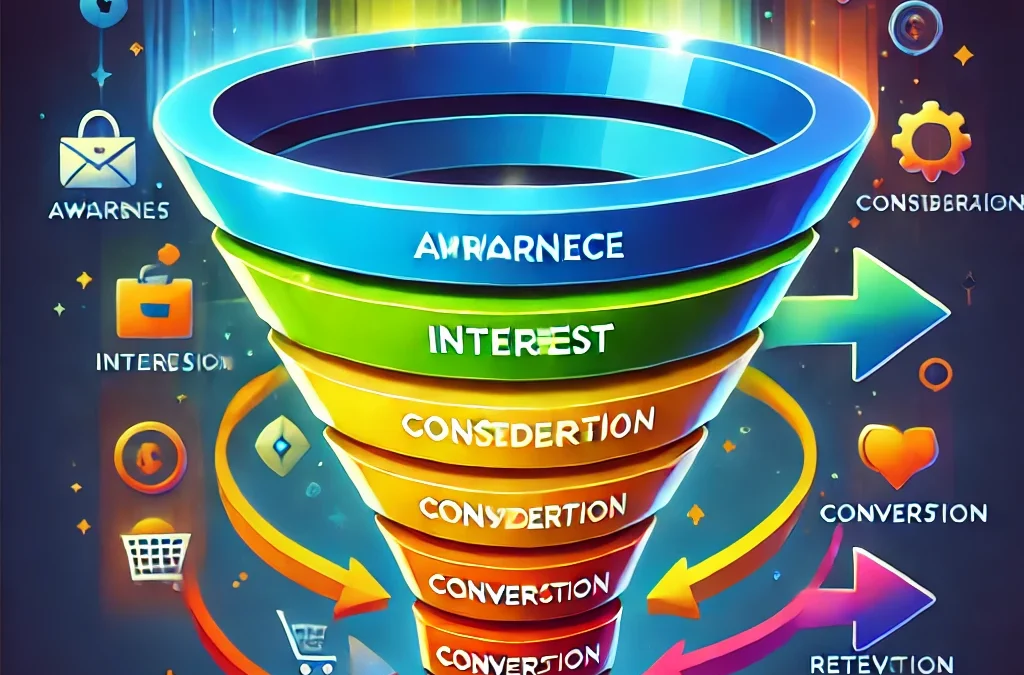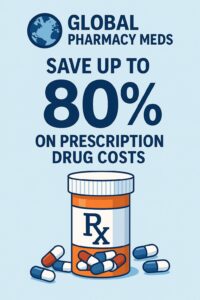How to Create a Winning Marketing Funnel to Convert Leads into Customers: A Step-by-Step Guide
A marketing funnel is a powerful strategy that guides potential customers through the buyer’s journey, from initial awareness to final conversion. By understanding how to build and optimize a marketing funnel, you can nurture prospects at each stage, provide valuable content, and ultimately convert leads into loyal customers.
In this comprehensive guide, we’ll walk you through the steps of creating an effective marketing funnel that maximizes conversions and drives business growth.
What is a Marketing Funnel?
A marketing funnel is a strategic framework that visualizes the process a prospect goes through from the moment they become aware of your brand to the point they make a purchase. The funnel is typically divided into several stages, each requiring specific tactics to move leads down the path toward conversion. The common stages of the marketing funnel are:
- Awareness: The prospect becomes aware of your brand, product, or service.
- Interest: The prospect shows interest and starts to engage with your content or brand.
- Consideration: The prospect evaluates your product or service, comparing it to alternatives.
- Conversion: The prospect makes the decision to buy.
- Loyalty: After the purchase, the customer remains engaged and loyal to your brand.
Let’s dive into the step-by-step process of building a successful marketing funnel.
Step 1: Define Your Target Audience
Before you can create a marketing funnel, it’s essential to have a deep understanding of your target audience. You need to know who your ideal customers are, their pain points, and what motivates them to take action.
Key Actions:
- Create Buyer Personas: Develop detailed profiles of your ideal customers, including demographic information (age, gender, location), behaviors, interests, and challenges.
- Understand Their Needs: Identify the problems or needs your product/service solves. Understanding this will help you create content that resonates with your audience at each stage of the funnel.
- Research Buying Behaviors: Study how your target audience typically makes purchasing decisions, including the platforms they use and the information they seek.
By understanding your audience, you’ll be able to craft messages and offers that effectively guide them through your funnel.
Step 2: Create Awareness with Top-of-the-Funnel (TOFU) Content
The first stage of the funnel is Awareness, where your goal is to make potential customers aware of your brand. At this stage, people are looking for information or solutions to their problems, but they may not be familiar with your product or service.
Key Strategies:
- Content Marketing: Create valuable, educational content that addresses your audience’s pain points. This can include blog posts, infographics, podcasts, and videos. For example, a blog post on “How to Lose Weight Without Dieting” would attract potential customers if you sell health and wellness products.
- SEO and Paid Ads: Use SEO to optimize your content for relevant keywords and improve your search engine rankings. You can also run targeted ads (Google Ads, Facebook Ads) to drive traffic to your website.
- Social Media: Share your content on social media platforms where your target audience is active. Engage with followers through comments, questions, and discussions to build relationships.
Content Ideas for Awareness Stage:
- Blog posts or articles
- How-to guides
- Infographics
- Social media posts
- Explainer videos
Goal: Capture the attention of potential customers by providing valuable information that helps them solve a problem.
Step 3: Generate Interest and Capture Leads with Middle-of-the-Funnel (MOFU) Content
Once you’ve attracted visitors to your website, the next step is to turn them into leads by capturing their contact information. In the Interest stage, prospects are actively looking for solutions and are willing to engage with your content in exchange for something valuable.
Key Strategies:
- Lead Magnets: Offer free resources like eBooks, whitepapers, checklists, or templates in exchange for the prospect’s email address. For example, if you’re in the fitness industry, you could offer a free “7-Day Workout Plan.”
- Landing Pages: Create optimized landing pages that clearly explain the benefits of your lead magnet and have a simple form to collect contact information. Ensure your call-to-action (CTA) is clear and compelling.
- Webinars and Free Trials: Hosting a webinar or offering a free trial is another effective way to capture leads, especially for service-based or SaaS businesses.
Content Ideas for Interest Stage:
- eBooks
- Free trials or demos
- Webinars or online workshops
- Email newsletter signups
- Case studies
Goal: Capture leads by providing a high-value offer that encourages prospects to share their contact information.
Step 4: Nurture Leads and Build Trust with Consideration Stage Content
Once you’ve captured leads, it’s time to nurture them and build trust by providing more in-depth, solution-focused content. At the Consideration stage, prospects are comparing options and looking for more detailed information about your product or service.
Key Strategies:
- Email Marketing: Send personalized, automated email sequences to nurture leads and provide helpful content. Share product comparisons, testimonials, and success stories to help leads see the value of your offering.
- Product Demos: Offer product demos or consultations to give leads a hands-on experience with your product. Show them how it solves their specific pain points.
- Case Studies and Testimonials: Share real-life examples of customers who have successfully used your product. Case studies and testimonials can build credibility and help prospects feel more confident in their decision.
Content Ideas for Consideration Stage:
- Detailed product demos
- Case studies
- Customer testimonials
- Free consultations
- Product comparison guides
Goal: Build trust and demonstrate how your product or service can solve the prospect’s problem, moving them closer to making a purchase.
Step 5: Convert Leads into Customers with Bottom-of-the-Funnel (BOFU) Content
In the Conversion stage, your goal is to turn leads into paying customers. At this point, prospects are ready to make a decision, but they may need a little extra incentive or reassurance before committing.
Key Strategies:
- Offer a Discount or Incentive: Provide a limited-time discount, free shipping, or a bonus gift to encourage leads to take the final step. For example, offering “10% off your first purchase” can help overcome hesitation.
- Clear Call-to-Actions: Ensure that your landing pages, product pages, and checkout process are optimized for conversions. Make your CTA buttons prominent and use action-oriented language like “Buy Now” or “Get Started Today.”
- Retargeting Ads: Use retargeting ads to remind prospects who have visited your site or abandoned their carts to complete their purchase. These ads can be shown on social media platforms or other websites.
Content Ideas for Conversion Stage:
- Special offers or discounts
- Product reviews or video testimonials
- Comparison charts
- Limited-time promotions
- Retargeting ads
Goal: Encourage leads to make a purchase by offering incentives and creating a sense of urgency.
Step 6: Build Customer Loyalty with Post-Purchase Engagement
The marketing funnel doesn’t end with a sale. To maximize the lifetime value of your customers, you need to continue nurturing them and building loyalty through post-purchase engagement. Satisfied customers can become repeat buyers and even advocates for your brand.
Key Strategies:
- Email Follow-Up: Send a thank-you email after the purchase and follow up with helpful content, such as product tips, how-to videos, or exclusive offers. Encourage customers to leave reviews or share their experience on social media.
- Loyalty Programs: Reward repeat customers with a loyalty program that offers points, discounts, or special perks. This can incentivize them to make future purchases and remain loyal to your brand.
- Referral Programs: Encourage satisfied customers to refer their friends by offering them a discount or reward for each successful referral.
Content Ideas for Loyalty Stage:
- Post-purchase email sequences
- Customer feedback requests
- Product tutorials or tips
- Loyalty and referral programs
- Exclusive offers for repeat customers
Goal: Turn one-time buyers into repeat customers and brand advocates by providing value and building a long-term relationship.
Step 7: Analyze and Optimize Your Funnel for Continuous Improvement
Building an effective marketing funnel is an ongoing process. Once you’ve implemented your funnel, it’s important to analyze its performance and make data-driven adjustments to improve your results.
Key Metrics to Track:
- Conversion Rates: Measure the conversion rates at each stage of the funnel to see where leads are dropping off. For example, if a lot of leads are captured but few convert, you may need to optimize your sales process or offer.
- Traffic Sources: Identify which traffic sources (social media, paid ads, SEO) are driving the most qualified leads.
- Cost per Lead and Cost per Acquisition: Track how much you’re spending to acquire each lead and convert them into a customer. Lowering these costs can significantly improve your ROI.
- Customer Lifetime Value (CLV): Determine the total revenue you can expect from a customer over their entire relationship with your business.
Optimize Your Funnel:
- Test different lead magnets, landing pages, and email sequences to see what resonates most with your audience.
- Use A/B testing to experiment with different CTAs, content formats, and messaging.
- Continuously refine your funnel based on feedback and performance metrics.
Conclusion
A well-designed marketing funnel is essential for nurturing leads, building trust, and converting prospects into loyal customers. By understanding each stage of the funnel—awareness, interest, consideration, conversion, and loyalty—you can create targeted content that guides your audience through the buyer’s journey.
Remember that a successful funnel isn’t static—it requires ongoing optimization, testing, and adaptation to ensure it continues delivering results. With a strategic approach and a focus on providing value at every stage, you can build a marketing funnel that drives long-term growth for your business.
By following this step-by-step guide, you’ll be well on your way to creating a winning marketing funnel that turns leads into loyal customers and advocates for your brand.


